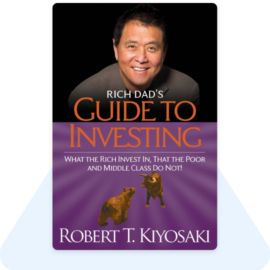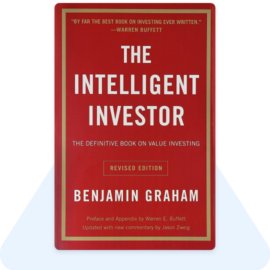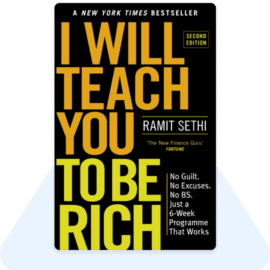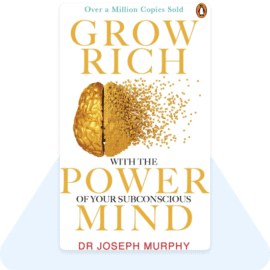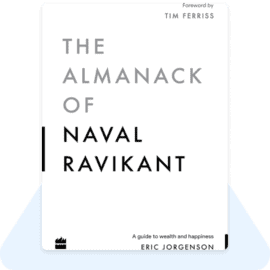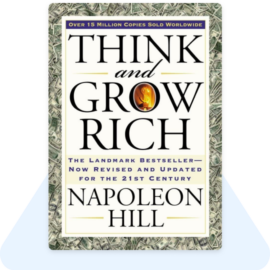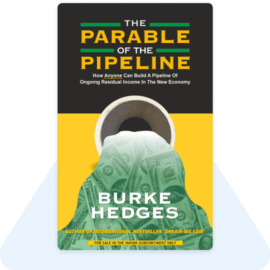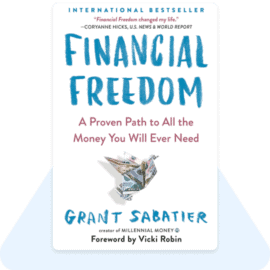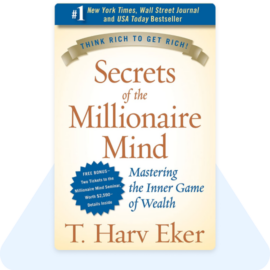Welcome to the summary of “Rich Dad’s Guide to Investing” by Robert T. Kiyosaki. In this guide, Kiyosaki shares his insights and experiences on investing, aiming to help readers navigate the complex world of finance and achieve financial independence. By learning from his rich dad’s teachings, Kiyosaki encourages readers to adopt a different mindset and approach towards money and investing. Throughout this summary, we will explore key concepts, strategies, and principles outlined by Kiyosaki to help you develop a solid foundation for successful investing.
Introduction
Friends, we all understand the importance of not only earning money but also investing it. Investing is the key to multiplying our wealth and becoming truly rich. By building assets through investments, we can achieve lasting wealth. To delve deeper into this topic, let’s discuss the highly acclaimed book, “Rich Dad’s Guide to Investing” by Robert Kiyosaki. When it comes to money matters, there’s no one better than Kiyosaki.
This book is divided into 33 investment lessons, making it easy to understand. Here are some of the lessons you’ll learn:–
1. Transitioning from an average investor to a professional investor and attaining riches.
2. The different types of investors in the market.
3. The essential qualities of a successful investor.
4. The distribution of wealth: why 10% of investors hold 90% of the money.
5. The differences between an average investor and a professional investor.
6. The key attributes of a rich investor.
7. How rich investors make money in all market conditions.
Investment Lesson 1. Invest Here
According to the author’s rich dad, the first step is to train your mind to see what the average investor cannot. This involves reading investment books, attending seminars, and building a team of accountants and brokers. The more knowledge you acquire, the better equipped your mind will be for successful investing. Start with these five recommended books: “One Up On Wall Street,” “Coffee Can Investing,” “I Will Teach You To Be Rich,” “The Intelligent Investor,” and “Rich Dad Poor Dad.”

Let’s explore the world of investing together and unlock the secrets to financial success!
Investment Lesson 2. Build the foundation of wealth
To begin, it is crucial to determine which financial group you aim to belong to—poor, middle class, or rich. Once you have made this decision, seek the necessary education, create a plan, and work diligently towards achieving success in that group. This step is of utmost importance as it provides clarity regarding your ultimate goal.
It will also guide you on the specific knowledge and skills you need to acquire, the actions you must take, and the level of effort required. Building a solid foundation requires strong determination and a clear vision for the future.
Investment Lesson 3. Choice
In life, individuals have three choices:-
1. Security: Those with a security mindset prioritize job stability. They often advocate for the traditional path of “Go to school, get good grades, and secure a high-paying job.”
2. Comfort: Individuals with a comfortable mindset seek investments with minimal or no risk, aiming for guaranteed success. They prefer to stay within their comfort zone and avoid taking significant risks.
3. Riches: Those with a rich mindset understand that success is intertwined with risk. They prioritize expanding their financial knowledge to minimize risk and maximize profits. They recognize that calculated risks are essential for achieving significant wealth.
It is crucial to choose wisely, as the outcomes will be based on the foundation of your chosen mindset.
Investment Lesson 4. What kind of world do you see?
Here, you will explore two contrasting worlds: one where there is a scarcity of money, and the other where there is an abundance of money. In a world of financial scarcity, individuals prioritize job security and financial stability. They avoid taking risks and struggle to save money while living with a perpetual shortage of funds throughout their lives.
In a world of financial abundance, people actively seek opportunities to earn more than they require. They continuously invest in their financial education, aiming to increase their financial intelligence. As a result, 90% of the world’s wealth is concentrated in the hands of the 10% who have prioritized financial education and adopted a mindset geared towards wealth creation. Conversely, those with a security-focused mindset account for only 10% of the wealth.
It is essential to understand these differing approaches, as they shape the financial outcomes individuals experience. By choosing to prioritize financial education and embrace a wealth-oriented mindset, one can unlock greater opportunities and increase their financial well-being.
Investment Lesson 5. Why is investing complicated?
Investment involves placing money in avenues that can enhance our lives and increase prosperity. Despite its simple meaning, some individuals find it challenging because it varies for each person. Some perceive investing as putting money in the stock market, while others consider investing in assets or obtaining insurance for their family’s well-being. The subject of investment is vast, and expertise differs among individuals, leading them to earn money according to their knowledge and share their experiences. Consequently, investment remains a dynamic field with diverse perspectives and opportunities.
Investment Lesson 6. Investment is planning.
Investment is not merely a product, a share, a bond, a real estate asset, or a business; it is a strategic plan that takes you from your financial goal A to goal B. It may involve utilizing a single product or a combination of different products, depending on your needs. The key is to earn Rs. 40 to Rs. 50 lakh and employ the appropriate products to achieve this goal.

Rather than sticking to a single product or plan, it is crucial to adapt and make changes when necessary, even if it means switching to different options. In a landscape with numerous investment choices, effective planning becomes paramount. Both the ability to adhere to a plan and the willingness to modify it when required are vital aspects of successful investing.
Investment Lesson 7. Rich Plan & Poor Plan.
There are two types of planning: one that leads to becoming rich and the other that leads to becoming poor. Your financial destiny is determined by your planning and actions. Rich planning involves learning about business and investments. To become rich, focus on securing your finances and creating passive income sources for a comfortable life.
Poor planning, on the other hand, entails relying solely on a job, saving money for retirement, making limited investments in the stock market, and neglecting to expand your financial knowledge. Now it’s up to us to decide which kind of planning we want to pursue.
Investment Lesson 8. How To Choose the right plan?
By following three methods, you can create the right plan for yourself:-
1. Determine your desired level of wealth: Start by asking yourself how much wealth you truly want to achieve.
2. Seek guidance from professional investors: Consult with experienced investors who can create a well-informed plan based on their expertise and guide you towards financial success.
3. Adopt a rich vocabulary: Embrace the vocabulary of the wealthy, focusing on terms related to investment and business. By thinking like a rich person, you can align your mindset with wealth-building strategies.
Through these approaches, you can develop a customized plan that aligns with your financial goals and sets you on the path to prosperity.
Investment Lesson 9. Decide what you want to be.
As we discussed earlier, your financial outcome depends on your planning. You have three options:
1. Financially secure: Create a plan to achieve financial security, providing support for yourself and your family. This may involve obtaining insurance to safeguard against unforeseen circumstances.
2. Comfortable: Aim for a comfortable life by generating a passive income source that surpasses your expenses. Breaking free from the cycle of working solely for money allows you time and freedom to pursue wealth-building opportunities.
3. Rich: To become rich, prioritize learning about investing. Acquiring knowledge in this area is essential for wealth accumulation and financial growth.
By implementing all three plans, you can establish a solid foundation for financial success, encompassing security, comfort, and the potential to become truly rich.
Investment Lesson 10. Investment is Not Risky.
People often perceive investment as risky due to three primary reasons:-
1. Lack of Investment Training: Many individuals experience losses in their investments because they lack the necessary training and knowledge in the field. Without proper understanding, they may make uninformed decisions that lead to financial setbacks.
2. Limited Control over Investments: Insufficient knowledge about the companies or assets they invest in leaves individuals with little control over their investments. This lack of control makes it challenging to minimize losses and maximize returns.
3. Limited Insider Investment: A significant number of people do not engage in insider investment in the stock market. Insider investment involves obtaining detailed knowledge about a company and making well-informed investment decisions based on that information. Without insider knowledge, individuals may miss out on potential investment opportunities.

To overcome these concerns, individuals should seek investment education and training, enhance their knowledge of investment opportunities, and consider seeking expert advice or conducting thorough research before making investment decisions.
Investment Lesson 11. Reduce your risk in life with investment.
When we have a job or run a business, our family becomes completely dependent on us. This poses a significant risk because life is unpredictable. To mitigate this risk, the safest and most reliable option is term insurance.
Investment Lesson 12. Basic rules of investment.
1. There are three primary ways to generate income: active, portfolio, and passive. To achieve wealth, it is essential to focus on developing passive and portfolio income streams rather than relying solely on active income.
2. Allocate your active income towards investments such as stocks, businesses, or real estate. These investments have the potential to generate portfolio and passive income, allowing you to earn money without actively working.
3. Prioritize the safety of your principal amount when investing. It is crucial to consider the risk associated with an investment and ensure the protection of your initial capital.
4. Understand the distinction between assets and liabilities. Assets are expenditures that bring money into your pocket, while liabilities are expenses that withdraw money from your pocket. Focus on acquiring income-generating assets and minimizing liabilities.
5. Professional investors carefully analyze the risk and reward factors of their investments. By assessing and managing these factors, they aim to reduce risks and increase potential profits.
By implementing these principles, you can build a strong foundation for financial growth and wealth accumulation.
Investment Lesson 13. Increase financial education.
To improve your financial education, it is crucial to read and understand a company’s financial statements. These statements, including income statements, expense statements, and asset reports, provide valuable insights into a company’s sales, management, and financial health before making investment decisions. Additionally, managing your own finances and actively engaging in financial practices will provide you with practical knowledge and firsthand experience. Remember, the more you expand your knowledge, the more equipped you will be to make informed financial decisions. This point is emphasized throughout the book, emphasizing the importance of continuous learning and practical application of financial knowledge.
Investment Lesson 14. Making financial knowledge easy.
Understanding financial statements allows investors to better estimate assets and liabilities. When it comes to financial education, remember these two key points:
1. Focus on Cash Flow: Transform your assets into cash flow generators. For instance, when you pay rent for a house without receiving any financial return, it becomes a liability. However, if you purchase an apartment and rent it out, generating a monthly income of Rs 10,000 while incurring a management cost of Rs 2,000, the extra income of Rs 8,000 becomes a positive cash flow. Initially, you may need to take a loan to acquire the property, but as the loan is paid off, it will eventually become an asset. Alternatively, consider purchasing a house without taking a loan.
By prioritizing cash flow-generating assets, you can build a solid foundation for financial success and achieve long-term wealth accumulation.
Investment Lesson 15. The magic of mistakes.
Mistakes are an integral part of the path to success. Those who try to avoid making mistakes miss out on valuable lessons about investment and business, which can hinder their progress and leave them struggling throughout their lives. The “Galti Na Karna” mindset, similar to the author’s poor father, stems from a fear of taking financial risks and a desire to avoid losses. However, this approach often leads to missed opportunities and potential failure.
In contrast, the author’s rich father embraced a different mindset. He actively pursued financial education, learned the language of the wealthy, and ventured into unfamiliar territories. He was unafraid of making small mistakes, as he recognized the learning opportunities they provided. By embracing failure as a stepping stone to improvement, he was able to continually grow and achieve greater success.
To truly thrive in the world of finance and investing, it is essential to acknowledge that mistakes will happen. Embrace them as valuable lessons, learn from them, and strive to perform better in the future. This mindset of continuous learning and fearlessness in the face of mistakes is a key characteristic of successful individuals in the realm of wealth creation.
Investment Lesson 16. The Cost of Getting Rich.
The belief that earning money is difficult or abundant can shape one’s reality. If a person believes that money is scarce, they may struggle to acquire wealth. Conversely, someone who recognizes the abundance of opportunities in the world may prioritize increasing their financial education to achieve their desired income. As you believe, so the world becomes.

To develop a mindset aligned with financial success, it is essential to remain humble and approach work with a spirit of service to humanity. By serving more people and solving their problems, you increase the likelihood of receiving substantial compensation in return. This can expedite your journey towards wealth.
Obtaining the “3 E’s” is crucial:–
1. Education: Acquire knowledge and skills through continuous learning, particularly in areas such as money management, cash flow, and investments.
2. Experience: Gain practical experience in various financial endeavors to enhance your expertise and understanding of different market dynamics.
3. Excess Money for Investment: Accumulate sufficient funds for investment purposes, enabling you to leverage opportunities and grow your wealth.
By prioritizing education, gaining experience, and having excess funds available for investment, you create a strong foundation for financial success. Keep learning and adapting to the ever-changing landscape of money management and investments to ensure continued growth and prosperity.
Investment lesson 17. 90/10 puzzle
The author highlights the disparity between the 10% of investors who generate 90% of the funds and the remaining 90% who only contribute to 10%. The key distinction lies in the focus on creating more assets. The 10% of successful investors prioritize building their businesses or investments, utilizing their enhanced 3E’s (Education, Experience, Excess money). They may form companies, issue IPOs, and sell shares in the market to generate wealth.
On the other hand, the 90% who earn 10% of the funds tend to invest a significant portion of their money in shares and assets of other companies. While this can be a good investment strategy, it is crucial to maintain control over such assets. The profitability and losses depend on the management of the invested company and market conditions. Additionally, these individuals may invest in blue-chip funds, top 500 companies, and nifty 50 companies, but they need to further expand their knowledge about money, cash flow, business, and investment to achieve greater growth.
The key takeaway is that the 10% of successful investors focus on building their own assets, while the majority of investors rely heavily on external assets. To increase their chances of financial success, individuals must prioritize knowledge and continuously expand their understanding of various aspects related to money management, cash flow, business, and investment.
Investment Lesson 18. Solving the 90/10 puzzle
If you have arrived at the solution of creating your own business in the 90/10 puzzle, it is indeed a significant direction for you. If you contemplate venturing into entrepreneurship, begin by observing the problems you face in your own life and the challenges others encounter. Consider how you can contribute to solving these problems and uplifting society by adding value to people’s lives. Once you have chosen your business idea, take action and continuously develop yourself over time.
In addition to taking action and honing your skills, confidence and trust are crucial factors in becoming a successful entrepreneur. Believe in yourself and your abilities, as confidence will help you navigate challenges and make bold decisions.
By focusing on problem-solving, adding value, and continuously improving yourself, you can pave the way for a successful journey in the world of business. Embrace the entrepreneurial spirit and embark on a path that has the potential to create a positive impact on both your life and the lives of others.
Investment Lesson 19. Types of Investors
Here, you will gain insights into different types of investors and how to manage their investments effectively:-
1. Self-Control Income: Focus on controlling your income by maximizing earning potential through various means, such as career advancement or additional income streams.
2. Expenses Control: Implement strategies to manage and control your expenses wisely, ensuring that you allocate funds efficiently and avoid unnecessary financial burdens.
3. Investment Management: Take charge of managing your investments, including portfolio diversification, risk assessment, and regular evaluation to optimize returns and minimize risks.
4. Tax Management: Understand the tax laws and regulations applicable to your investments, and explore legal avenues to minimize tax liabilities and maximize after-tax returns.
5. Information Management: Stay informed and up-to-date with market trends, economic indicators, and relevant news that may impact your investment decisions. Regularly analyze and interpret information to make informed choices.
Now, let’s explore five different types of investors:-
1. Accredited Investor: An investor with an annual income exceeding $100,000 who meets specific financial criteria. They have access to certain investment opportunities not available to the general public.
2. Qualified Investor: A knowledgeable investor who understands the workings of public markets and complies with specific regulations. They are also referred to as outside investors.
3. Mutual Investor: A well-informed investor who possesses the “3 Es” (Education, Experience, and Excess money) and has a comprehensive understanding of the investment world. They are aware of strategies to reduce taxes by utilizing corporate laws.
4. Insider Investor: An investor who is connected to a company’s management, possesses insider knowledge, and has the ability to influence their decisions. Successful investments can be made by targeting opportunities with insider access.
5. Final Investor: An investor who owns a successful business and can leverage their business profits to make additional investments.
Understanding these different types of investors and effectively managing various aspects of investment can significantly enhance your financial journey and increase the potential for long-term success.
Investment Lesson 20. Accredited Investor
As discussed in the previous lesson, an accredited investor is typically a high-income investor who meets certain financial criteria. The specific requirements for being considered an accredited investor may vary from country to country. For instance, in the United States, an individual with an annual income of $2 million is often classified as an accredited investor.
Accredited investors generally have significant financial resources at their disposal. However, it is crucial to note that having substantial funds does not necessarily equate to extensive knowledge about investing. While they may possess excess income (one of the 3 Es), they still need to actively pursue investment education to make informed decisions.

It’s worth mentioning that accredited investors often engage in high-risk investments. Due to their financial capacity, they may have a higher risk tolerance and seek opportunities with potentially higher returns, even though they come with elevated risks.
Investment Lesson 21. Qualified Investor
A person with a certain level of knowledge about money and investment is referred to as a qualified investor. Qualified investors have control over various aspects, including:
1. Yourself: They have control over their own financial decisions and understand the importance of managing their personal finances effectively.
2. Income, Expenses, Assets, and Liabilities: Qualified investors have a grasp of managing their income, controlling expenses, evaluating assets, and understanding liabilities. They prioritize financial stability and make informed decisions in these areas.
3. Buying and Selling: They possess the knowledge and skills to make strategic buying and selling decisions in the investment market. They understand how to assess investment opportunities and act accordingly.
Regarding the 3 E’s, the breakdown is as follows:-
1. Education: Qualified investors have gained a certain level of education in money management and investment. They possess foundational knowledge in these areas.
2. Experience: While their experience may be limited, they have likely accumulated some practical understanding of money and investment through their exposure to financial decisions and transactions.
3. Extra Income: Qualified investors may have a modest amount of extra income that they can allocate towards investments and wealth-building endeavors.
Overall, qualified investors demonstrate a level of financial knowledge and control over their personal finances. They continue to develop their expertise through education and gain experience over time, gradually increasing their financial capabilities.
Investment Lesson 22. Mutual Investor
The mutual investor possesses a similar level of knowledge as the qualified investor. However, they also have a good understanding of tax and corporate laws, which allows them to navigate the investment landscape more effectively. This level of investment expertise is considered advantageous.
Being a mutual investor can provide opportunities to make substantial wealth, even in markets that are going up, down, or experiencing volatility. Many wealthy individuals have achieved their success by operating at this level of investment proficiency.
By leveraging their knowledge of tax strategies and corporate laws, mutual investors can optimize their investment decisions and potentially generate significant returns. This level of understanding allows them to capitalize on opportunities and navigate market conditions, regardless of the overall market trend.
Investment Lesson 23. Insider investor
Insider investors have a unique position in their investments as they are directly involved in the management and decision-making processes of the asset or company. They often hold significant control, similar to being the owner of their own business or by becoming the largest shareholder in another company. This level of control provides them with insights and influence over the direction and operations of the investment.
Many insider investors are internationally focused, meaning they engage in investments across borders and have a global perspective on their assets. This allows them to access diverse opportunities and potentially expand their investment portfolio.
Just like other types of investors, insider investors also possess the 3 Es (Education, Experience, Excess money). This means they have invested in their own knowledge and skills, gained valuable experience in the investment field, and have sufficient financial resources to pursue their investment objectives.
Investment Lesson 24. The Final Investor
The Final investor is the one who creates an asset that is so valuable that it reaches millions of people, like Bill Gates’ Microsoft software. These investors make large companies in which other investors invest. The last investor controls all the investment controllers as well as they have 3Es.

Investment Lesson 25. How to get rich slowly?
First, save your money and invest it in monthly cash flow-generating assets. After that, from the income from that asset, make another asset so that the cash flow keeps increasing. And passive income should continue to grow more and more. And in the same way, you should keep building assets until you become rich by achieving your set financial goals. Like buying a house. Rent from him. Buy another house after collecting that rent money. Then wish to rent even more. And repeating this process until you reach your financial goal.
Investment Lesson 26. How to become rich while Working?
For this, follow these steps:-
1. Create Part-Time Asset: Along with your job, you should start your part-time business in your spare time.
2. Learn the necessary skills and law: In part-time, you should learn the necessary skills and law to become a business person and investor. Like communication skills, leadership, team management, tax law, and corporate law. The more hard work you do here, the sooner you will be successful.
Investment Lesson 27. Burning Desire to Become Entrepreneur.
To become rich, you must have a burning desire to become an Entrepreneur. And you can develop it within yourself in these ways:
1. Save money for investment: Always remember that you are adding to earn more money. Instead of spending it on movies or nights out.
2. You should start a business as soon as possible, even if you start with a product that solves a problem.
3. While improving skills step by step, you should enhance your 3E’s and read many financial statements.
Investment Lesson 28. How to Start a Business?
There are three reasons to start a business:-
1. To earn more cash flow: You can earn monthly cash flow by building a business or by giving property on rent.
2. To sell it: For this, you build a business and sell it so that you can invest in assets that give more cash flow with the money you get from it.
3. Create a business and make it public: For this, you create a social problem-solving company and issue an IPO for that. So that when someone buys the shares of your company, your income can be generated.
So, before starting the business, you must choose your reason from these and plan well accordingly.
Investment Lesson 29. Cashflow Management
Just like blood is needed in the body, in the same way, cash flow is significant for business; cash flow should start from the day you start your business. It would help if you always focused on keeping your cash flow positive. This is something that many new businesses do not focus on. And this is the reason why most of the businesses get closed. Daily cashflow is very critical of your business.
Investment Lesson 30. Communication Management
You should manage the internal and external communication of your company well.
External communication includes all of the following:-
• Sales
• Distribution
• Customer Service
• Investor Relations
• Public Relations
And internal communication includes:-
• Sharing success and failure with your entire team
• Regular meetings with employees
• Regular communication with advisors
• Human resource policies
Investment Lesson 31. System Management
You should create an automatic and clearly defined system for each person’s specific responsibilities:-
Your system should include:
• Daily Office Operations Systems
• Product Development Systems
• Manufacturing and Inventory Systems
• Order Processing Systems
• Billing and Accounts Receivable Systems
• Customer Service System
• Accounts Payable Systems
• Marketing Systems
• Human Resource Systems
• General Accounting Systems
• General Corporate Systems
• Physical Location Management System etc.
Investment Lesson 32. Legal Management
You should make your necessary legal documents because these documents will provide you with specific protection and intellectual property ownership. With this type of security, you can avoid losing everything once you have secured your interests. You can sell it to others as a license, franchise. This will give you a chance to earn royalty income.

You should take help in some fields after discussing it with your law person, like corporate, consumer laws, intellectual property laws, shareholder laws etc.
Investment Lesson 33. Product Management
The buyer finally buys the company’s product, which is the last factor of the B-I triangle. This is one of the most important parts. Because of this, that cash flow comes, and the company runs. That’s why always keep making your product customer oriented. Your business system in the B-I triangle, which makes the product, delivers it to the customer, and earns profit, also needs to be run properly. Maybe many of us can make a better burger than McDonald’s, but only a few can make a better system.
Conclusion
“Rich Dad’s Guide to Investing” by Robert T. Kiyosaki. In this book, Kiyosaki provides valuable advice and perspectives on investing that can reshape your financial future. By understanding the difference between assets and liabilities, developing financial intelligence, and adopting a strategic approach, you can take control of your financial destiny.
Remember, investing is not just about money; it’s about developing the right mindset, continuously educating yourself, and taking calculated risks. Armed with the knowledge gained from this guide, you are now equipped to embark on your own journey towards financial freedom. Start investing wisely and let your wealth work for you. Good luck!
Book Review
“Rich Dad’s Guide to Investing” by Robert T. Kiyosaki offers valuable insights into the world of investing. With a focus on financial literacy and mindset, Kiyosaki challenges conventional thinking and empowers readers to take control of their financial future. While lacking specific investment strategies, the book serves as an excellent starting point for those looking to develop a long-term investment mindset.
Contents

